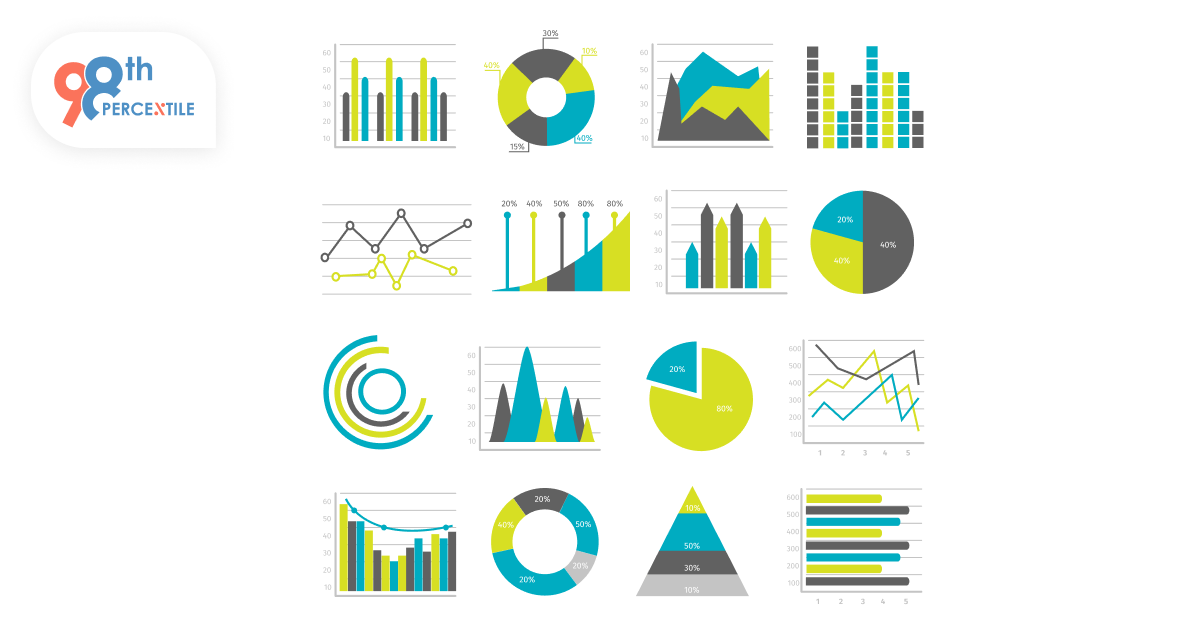Aren't graphs just fascinating? They can instantly make a plain presentation or a word document exciting. Graphs can be our best friends when comparing data or giving a clear picture of various scenarios. Different types of graphs can help us better comprehend data. In every walk of life, we may need to show comparisons that can be better done with graphs. And guess what, we have various ones for various types of data.
Data representation via graphs is widely popular. By understandably displaying data, graphs are visual aids that help in data analysis and comprehension. They make difficult material easier to understand and enable us to spot links, trends, and patterns. Graphs are essential for decision-making in business, education, and daily life. Gaining knowledge of the many kinds of graphs and how they are used in the real world will improve your capacity for efficient data interpretation.
What Are Graphs?
Numerical data is represented using different types of graphs, which use regions, dots, bars, or lines. They facilitate value comparison, time-series tracking, and the visualization of variable relationships. Complex numbers are simplified by graphs, which improves data analysis and problem-solving across a range of domains.
Different Types of Graphs
Let us know in brief the different types of graphs that are used, and know about their features with an example.
Bar Graph
- Displays data comparisons using rectangular bars.
- Useful for contrasting several categories.
- Comparing the sales of several products is one example for using a bar graph.
Line Graph
- Shows trends over time by connecting points with lines.
- Useful for monitoring expansion or contraction.
- For instance, the performance of the stock market over a year can be shown using this.
Pie Chart
- Circular diagram with sections.
- Represents a whole's proportions.
- For instance, the proportion of students who select certain subjects can be better depicted using this.
Histogram
- It is used for frequency distribution and is comparable to a bar graph.
- Demonstrates the range distribution of data.
- For instance, Students' exam results in a class.
A scatter Plot
- Illustrates the connections between two variables using dots.
- Helps in finding connections.
- For instance, Study hours against test results.
Book FREE Math Trial Classes Now!
Useful Real-World Graph Applications
- Data representation is something which is used by a lot of sectors and graphs are used for the same. Let us see some industries that use graphs regularly-
- Learning: Teachers examine student performance using graphs. We at 98thPercentile use graphs for the convenience of students and teachers. It gives a sense of clarity on how a student performs and what should be taken care of.
- Industry & Marketing: Businesses use bar and pie charts to monitor sales and consumer behavior.
- Health & Medical Treatment: Physicians track patients' progress using line graphs.
- Finance: Line and scatter plots are used by analysts to examine financial trends.
- Science and Research: Histograms aid in the analysis of experiment outcomes.
In conclusion, different types of graphs are effective tools that enable us to visualize and analyze data in a variety of domains. Better information transmission and decision-making are made possible by an understanding of the various graph kinds. Gaining proficiency with graphs improves analytical thinking and problem-solving abilities in the workplace, in the classroom, and in daily life. To know more, visit www.98thpercentile.com and check out our various after-school enrichment programs which will help your child stay ahead in the race.
FAQs (Frequently Asked Questions)
Q.1: What are graphs?
Ans: Graphs are data representations that make relationships, trends, and comparisons easier to understand.
Q.2: Why are graphs used?
Ans: Graphs simplify complicated data, which facilitates efficient information analysis, interpretation, and communication.
Q.3: Name 3 types of graphs.
Ans: Pie charts, line graphs, and bar graphs.
Q.4: Which type of graph is used regularly and why?
Ans: Bar graphs are frequently used because they make it easy to compare various data groups.
Q.5: Which sector uses graphs the most?
Ans: Graphs are widely used in the business, finance, and research sectors for data analysis and decision-making.

 Students/Staff
Students/Staff Parents
Parents ElevatEd
ElevatEd



-Nov-18-2025-03-57-47-3267-AM.png?width=360&length=360&name=401x226%20(6)-Nov-18-2025-03-57-47-3267-AM.png)



-Jul-22-2025-03-16-52-8797-AM.png?width=360&length=360&name=401x226%20(6)-Jul-22-2025-03-16-52-8797-AM.png)






